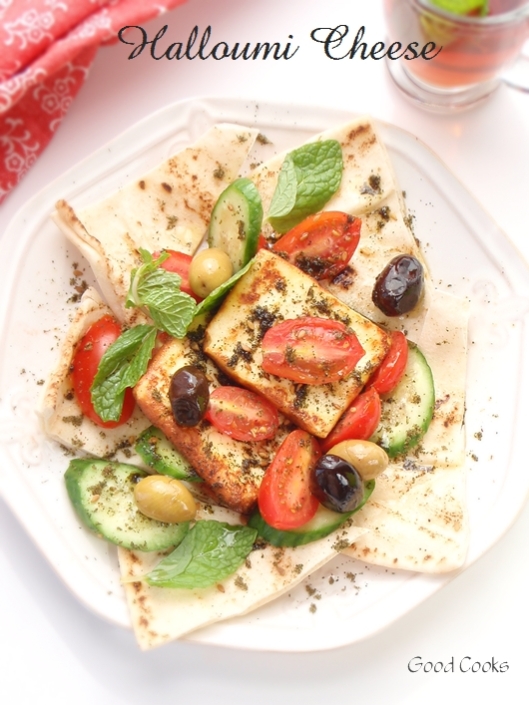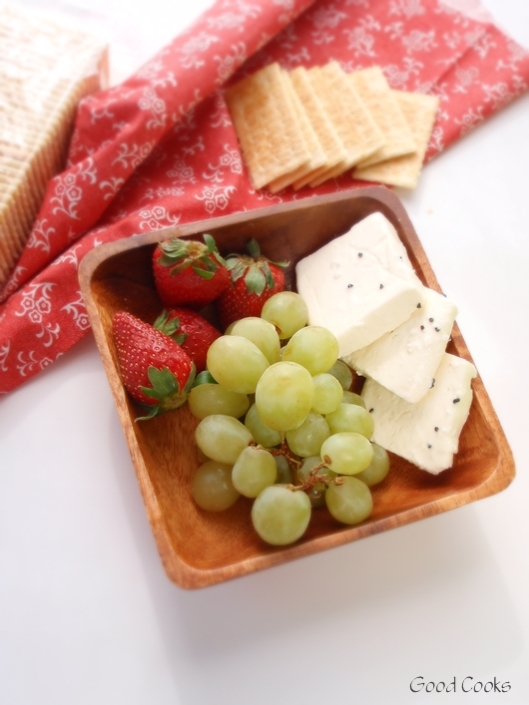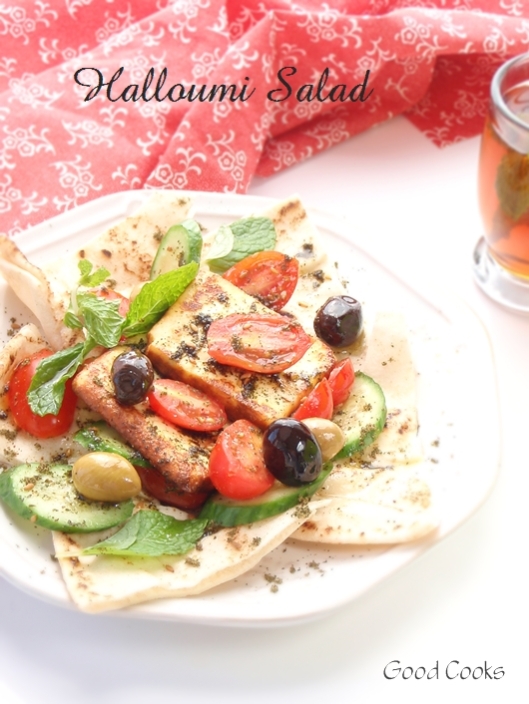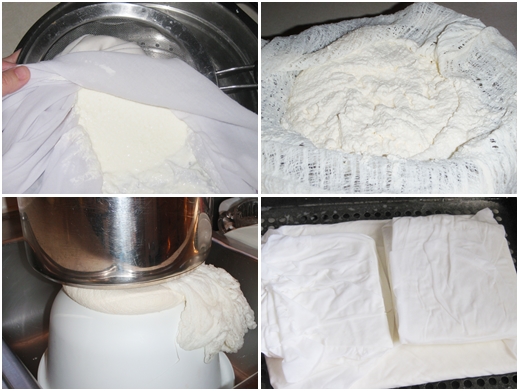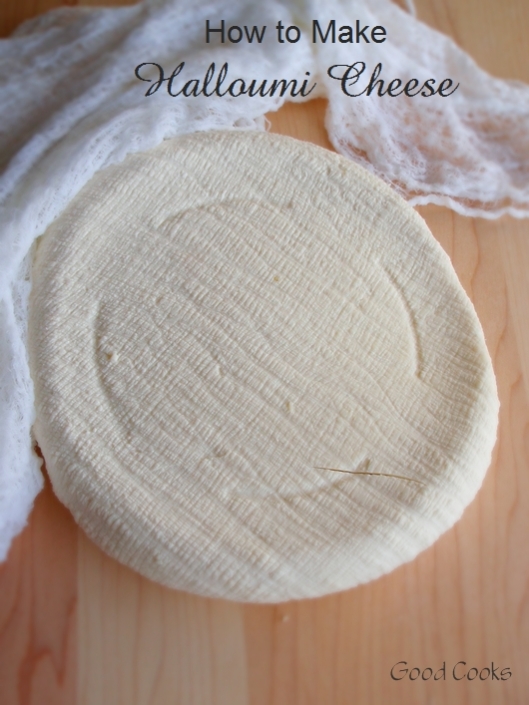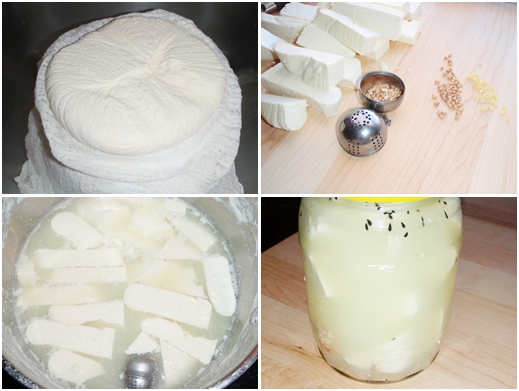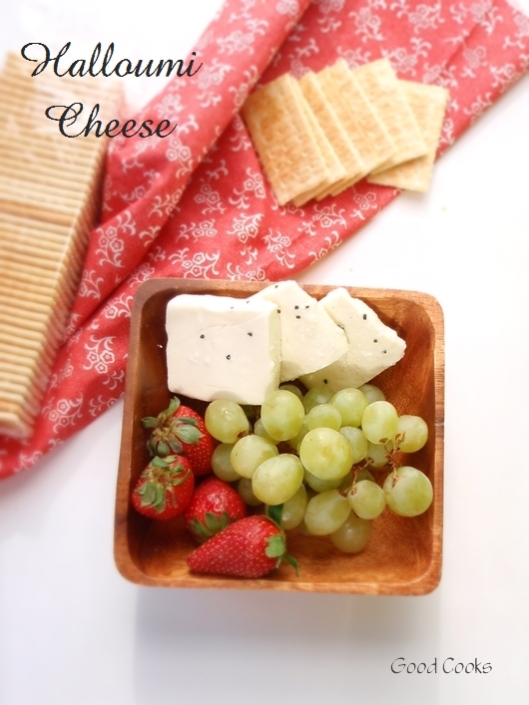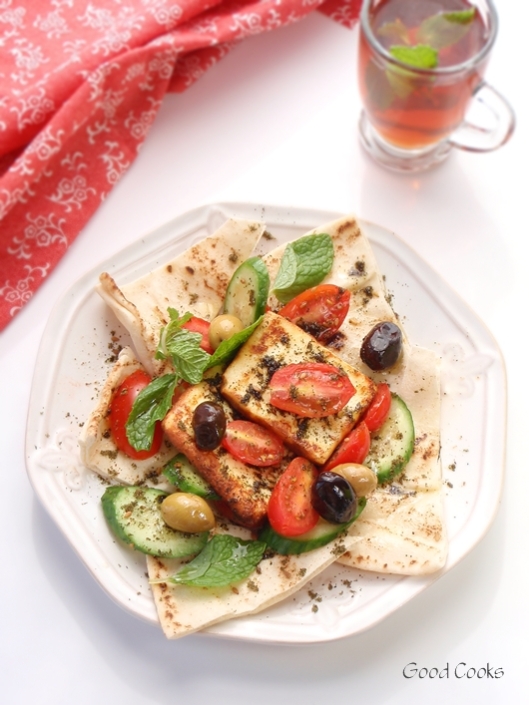Tags
cheese, cheese making, cow's milk, fried halloumi, from scratch, halloumi, Homemaid, How to, How to make halloumi at home, making cheese at home, Mezze table, Middle East, Rennet, step by step, Za'tar
Why to pay high prices for halloumi cheese while you can make it at home? You will be amazed how easy it is!
I like making things from scratch, especially if it is much expensive to buy from stores. I know, mostly I don’t have time to do everything, but making thing from scratch makes me proudly happy. Being a middle eastern, I grew up eating cheese from that kind- the white and salty brined cheese, the twisted or Mojadallah, Kashkawan the creamy cheese. There were also many kinds of imported yellow cheeses, but not really my big fan.
The white brined cheese is a kind of cheese which is an everyday stable food on the middle eastern table in savory or sweet dishes, delicious and rich that you can’t stop eating.
Like the Nabulsi and Akawi cheese, halloumi is one of many kinds of traditional white Middle Eastern brined cheese. Originally from Cyprus and also known in various countries of the middle east, particularly in Palestine, Jordan, Syria and Lebanon. It is produced mainly from goat and sheep milk, although cow’s milk is now widely used in making this kind of cheese(the one which I used with the addition of more fresh cream to the milk), or a combination of the sheep and cow’s milk.
I like to add flavors to the cheese, with mahlab (Prunus mahaleb) and mastic (Pistacia lentiscus) added to the boiling brine, or sometimes flavored with black sesame seed which added to the brine after boiling.
Halloumi texture is firm and rubbery until grilled or pan-fried, then It becomes crispy on the outside and soft and elastic In the middle. It is commonly used as a salty table cheese, it can be fried in oil, or grilled. The flavor is similar to mozzarella, only with more salt.
Generally, as a table cheese, I enjoy serving it as part of mezze with some fruits and crackers on the side.
It is also used as a filling in savory pastries, like in the Minted Cheese Stuffed Rolls
Holloumi is wonderful when grilled or fried, served at breakfast or brunch. I like it fried in olive oil, sprinkled with Za’tar spice mix, served with some pita bread and some fresh vegetable. Serve it straight from the pan, as it becomes rubbery when cool.
Equipments to make the cheese:
No special equipment required to make halloumi cheese, but you need at least a large pot to heat the milk, thermometer, colander, sieve, cheese cloth or muslin cotton cloth
Step By Step on How to Make Halloumi at Home:
2 gallons vitamin D cow’s milk
2 cups fresh cream (whipping cream)
1 teaspoon pickling salt + 1/2 more for the brine
1/4 tablet rennet
1/2 cup cold milk
1 teaspoon mahleb
1/2 teaspoon mastic
I started with 2 gallon of milk, full-cream and not homogenized. In a spice infuser, place 1/4 teaspoon crushed mastic gum and 1/4 teaspoon crushed mahleb, immerse in the milk while heated. Heat milk to 85-90 f (use the thermometer) slowly on low heat in heavy stainless steel sauce-pan (do not use aluminum). Add the cream and the pickling salt, stir the milk. Add the dissolved rennet, I used the tablet rennet(follow the instruction on the rennet), dissolve 1/4 tablet (you have to crush it first)into 1/2 cup cold milk, stir then add to the heated milk, stir quickly for 1 min.
Let the milk rest for 45-60 minutes (or until a clean break), covering the pot with a lid and keeping the temperature constant on 85-90 f (you may like to place the pot into a bigger pot with hot water, or wrap it with a warm towel, or keep it in a pre heated oven (warm the oven for couple of minutes then turn the heat off).
To check for a clean break, use a knife to make a cut through the curd.
Cut the curd into 1/2 inch cubes.
Using a large hand sieve, take some clotted cheese, shake lightly to drain out some of the whey, place in cheese cloth lined colander. Fold the corners of the cloth over the cheese, and place a heavy weight on the top, let set to drain for 1-2 hours. Reserve the whey.
The cheese should be firm with spongy consistency. Take the cheese from the mold and cut it into 2″ thick strips, add sprinkle with salt and let aside.
Make a brine with 2 quarts of the whey and 1/4 cup pickling salt. Add the mastic and mahlab infuser ball. Bring to a boil, add the cheese pieces, let boil for 1 min, then take the cheese pieces into clean linen lined shallow dish.
Arrange the cheese in the jars, add the brine to fill the top, sprinkle some nigella seed. Reserve in the refrigerator.
Some tips:
Using the Rennet
You can use the tablet rennet, follow the directions on how to use it. Usually found at cheese making stores, or at the internet. I bought mine from a pharmacy in the middle east. There is also liquid rennet available. When purchasing the rennet, just make sure to ask about the source, especially if you are seeking kosher.
Flavoring the Cheese
Halloumi has a distinctive flavor. In middle east most white cheeses flavored with mastic and mahlab, or nigella seeds, anise and caraway seeds might be used too, those can be found in middle eastern stores. Some other flavores used is mint, olives, or dried tomato. If you don’t have spice infuser, you can put the mastic and mahlab in small piece of cloth and wrap it around like a purse.
Brine Concentration
Brines used to store these cheeses are normally 16% salt, the minimum for minimizing unwanted bacteria growth.
Higher % salt can be used, but is not required and will make the cheese taste very salty.
Lower % salt will result in a more immediately edible cheese but with shorter shelf life due to unwanted bacteria growth
Base Fluid
Base fluid options for making brine for ripening cheese are water, a mixture of water and whey, or all whey from making cheese.
Using whey gives the brine a higher calcium component, also makes the brine ripened cheese more flavourful.
Before Serving
Because of being reserved in salty brine, soak the cheese in warm water for 1/2 an Hour, to get rid off some of the salt and this will also make the cheese more soft.

